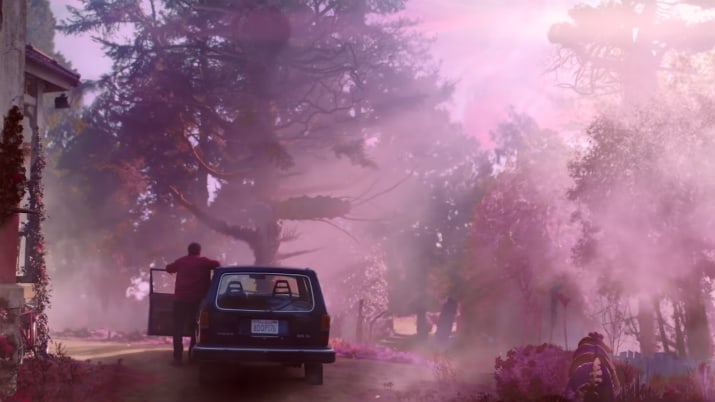★★★ out of ★★★★★
Directed by Richard Stanley
Is the ultimate test of a director the ability to grow, mature, and evolve? Pick up new tricks, devices, and viewpoints? Create new and unique takes on the film medium? OR, is it the director’s job to figure out what formula works, stick with that, and never grow, mature, and evolve. Sort of a “greatest hits” approach to filmmaking.
Turns outs cult director Richard Stanley might be in the latter camp. For those unfamiliar with his non-traditional directorial through-line, Stanley has done a couple of films (Island of Dr. Moreau (uncredited) and Hardware), written a ton, directed some documentaries and music videos, but never really obtained that smash hit or even that film that audiences would forever associate with him. He has a track record for sure, but it’s…uh…uneven.
So why not throw an HP Lovecraft story his way? Why indeed.
HP Lovecraft stories in the film world have been a rather mercurial affair. The number of solid HP Lovecraft translated to celluloid is thin. Difficult to translate, too cosmically ethereal, and a dense and overwhelming freakout ultimately left to one’s own imagination. You might even conclude that Lovecraft-to-film is a cursed and foredoomed mission. All that enter will fail!

Richard Stanley approaches the assignment with a purposeful and maybe understandably 1980s pastiche. You see, it’s been done before — and has largely failed — Die, Monster, Die! (1965), The Curse (1987), Colour from the Dark (2008), and The Colour Out of Space (Die Farbe) (2010). The 2020 flavor follows THE Nick Cage and his well-heeled family who have relocated from the big city to the spooky confines of the “blasted heath” of the wild west hills. They’re living the good life, plenty of money, lots of Speilbergian family love, and an ample supply of water and alpacas. That is until an outlandish purple/pink/lavender meteor hits their family farm and the weird gets real. Strange lights, shifts in time, off-putting vegetation, and garbled voices from the cosmos. All are on display in a fully technical bum trip.
Punctuated by a couple of great scenes with the sublime Tommy Chong — not wandering too far from his hippy confines — the Color Out of Space mostly functions in style, pacing, and acting as a late 1980s horror film. Really, there’s very little that’s new or innovative. Nick Cage does what he’s supposed to. Sometimes raw and real, but often silly and stilted. Most importantly Color Out of Space suffers from one major pitfall, lack of a true protagonist. Obviously, in Lovecraft’s 1927 book, the story is filtered through a local surveyor/hydrologist. While there is a surveyor/hydrologist in the film who bookends the story with a clever bit of narration, the character is mostly left alone and never really develops into any level of importance. All the characters, including Cage’s, meander in and out of the film with seemingly no purpose or point. In the end, the audience is left wondering who to follow and why.
The Color Out of Space is, however, a good looking film. There are some really wonderful practical effects. An aggressive and frightening soundtrack. And there are some wonderful jump scares — including an age-old cat jump scare. Even many elements of Nick Cage’s performance achieve a wonderful plateau of manic excellence. Yet, all these things don’t really add up to a singular movement that goes anywhere. Maybe it’s the Lovecraft curse. Maybe it’s the lack of psychedelia. Maybe it’s too much psychedelia. Whatever the issue, it’s fair to say the Color Out of Space is from a different past. A past that audiences of a certain age may remember. We’ll call that past the 1980s.
Color Out of Space is probably Rated R and in theaters now!

